Cycling to work has, in our opinion, always been a fantastic way to stay healthy, save money and look after the planet.
In May 2020, the UK’s transport secretary Grant Shapps laid out government plans for ‘a new era for cycling and walking’, pledging £2bn worth of investment.
Maybe you’re considering cycling to work for the first time, or maybe you haven’t ridden a bike since you were a child. The old adage ‘you never forget how to ride a bike’ almost always holds true.
Even if you’ve never ridden before, learning how to ride a bike is easier than you think.
In reality, biking to work is usually cheaper, more fun and often quicker than other forms of transport. There will be moments when not everything goes as planned, but, like with anything, preparation is the key to success.
These are our top tips for riding a bike to work, gleaned from years of collective experience across the BikeRadar team. After you've read these, our top five cycle commuting hacks will inform you better still.
Once you get into the habit, you’ll learn all the tricks and become a hardened bicycle commuter in no time. We genuinely don’t know many people who have decided to go back to commuting by car or public transport after trying cycling to work.
Biking to work | 10 tips to make cycling to work a breeze
Get the right bike for the job

Ultimately, if you're just looking to get started on cycle commuting, the best bike for the job is the one you already have.
If you already have a bike of any sort that’s in serviceable condition, then you’re probably good for a while. If you don’t, or your commute is particularly long and arduous, then you may need to consider buying a bike.
Dedicated commuters might also look at buying a new bike specifically for the task, rather than pressing an old bike into service, for example. You can get the new one kitted out with all the right stuff and there’s nothing quite like ‘new bike day’.
To decide what's the best bike for commuting, you'll need to evaluate the type of terrain you’ll be riding; is it flat or hilly? On or off-road? etc. You also need to think about how you want to carry your gear to work – we'll cover this in more detail – and whether you want to use the bike beyond your commute.

Don’t simply assume you need a road bike just because you’ll be riding on the road.
More often than not, most ‘road bikes’ should actually be called ‘road racing bikes’. They aren’t always equipped for the demands of commuting by bike to work.
The road surfaces you encounter, and weather if you live somewhere with a changeable or inclement climate, will wear out components, so a cheap road bike is a decent bet if you do want drop bars and skinny tyres.
Its drivetrain, including the cassette, chain and crankset, will be less expensive to replace.
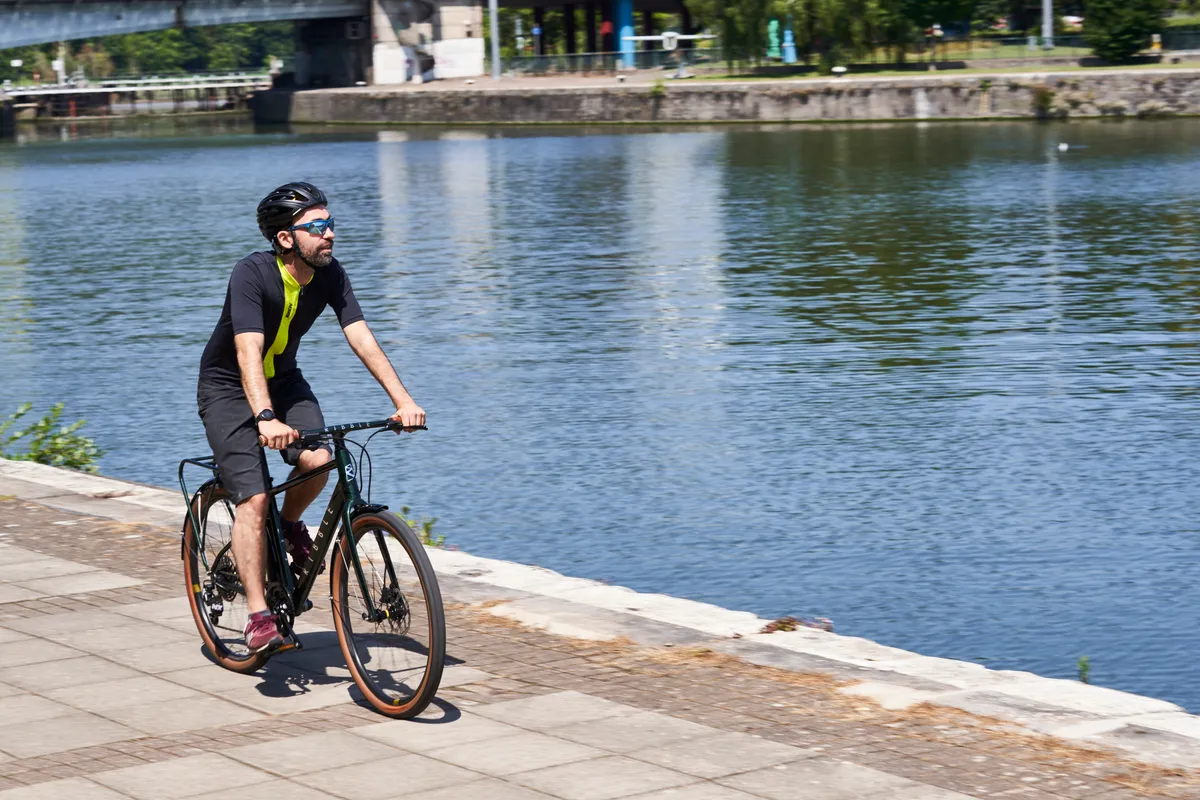
For all-round capability, it’s difficult to beat one of the best gravel bikes or, if you prefer flat bars, a hybrid bike, because they're just so versatile.
Regardless, if you want to use a pannier rack to carry your work gear, make sure the bike you're buying has the required mounts to fit a pannier.
The same goes for mudguards. If you want to use proper 'guards – and we'd wholeheartedly recommend mudguards for commuting if you're likely to encounter rain – then you'll need a bike with eyelets. Touring bikes and winter bikes are typically well-equipped for such practical accessories.
If you live in a hilly area, want to carry heavy loads or just fancy a little assistance, then one of the best electric bikes could be ideal.
In the UK, working adults aged 16 and over can also use the Cycle to Work scheme to save up to 42 per cent off the cost of a brand-new bike.
Safety check your bike

If you’ve already got a bike, the very first thing you should do before you try to ride it is give it a safety check (often referred to as the 'M check').
Bikes built for general transport and commuter use are usually quite robust, but there are still a few parts that can wear out or degrade over time if the bike has just been sat in your garage.
Even if your bike is brand new, it still makes sense to double-check that everything has been set up correctly, especially if you bought it online or have a second-hand bike. Better safe than sorry.
We’ve published a detailed guide to safety checking your bike and we would strongly encourage you to read it.
Plan ahead and practise the route

Planning ahead and riding your route in advance is a great way to ease any stress on your first day commuting by bike.
There are plenty of good cycling apps and route-mapping tools such as Komoot and Ride with GPS, but apps such as Google Maps can work well too – just remember to change your transport mode from car to bike. Doing so enables it to work out a quieter, safer route for biking to work.
You can then upload the route onto your bike computer. If you don't have one, the best bike phone mounts are perfect for commuting by bike. They allow you to navigate with your phone as you ride.
In the UK, the National Cycle Network and Transport for London both have route-planning capabilities to indicate quieter routes if you want to avoid busy roads. If you're outside of the UK, look for similar services where you live.

We’d usually suggest opting for a longer route on quieter roads, over a more direct route on busy ones. You want to make the journey as safe, easy and stress-free as possible.
Once you think you’ve got the best route planned, it’s always worth having a practice run on a quiet day (usually a weekend).
This gives you a chance to double-check everything with less pressure from traffic and means you won’t have to worry about directions on your first proper go at it.
Give yourself time
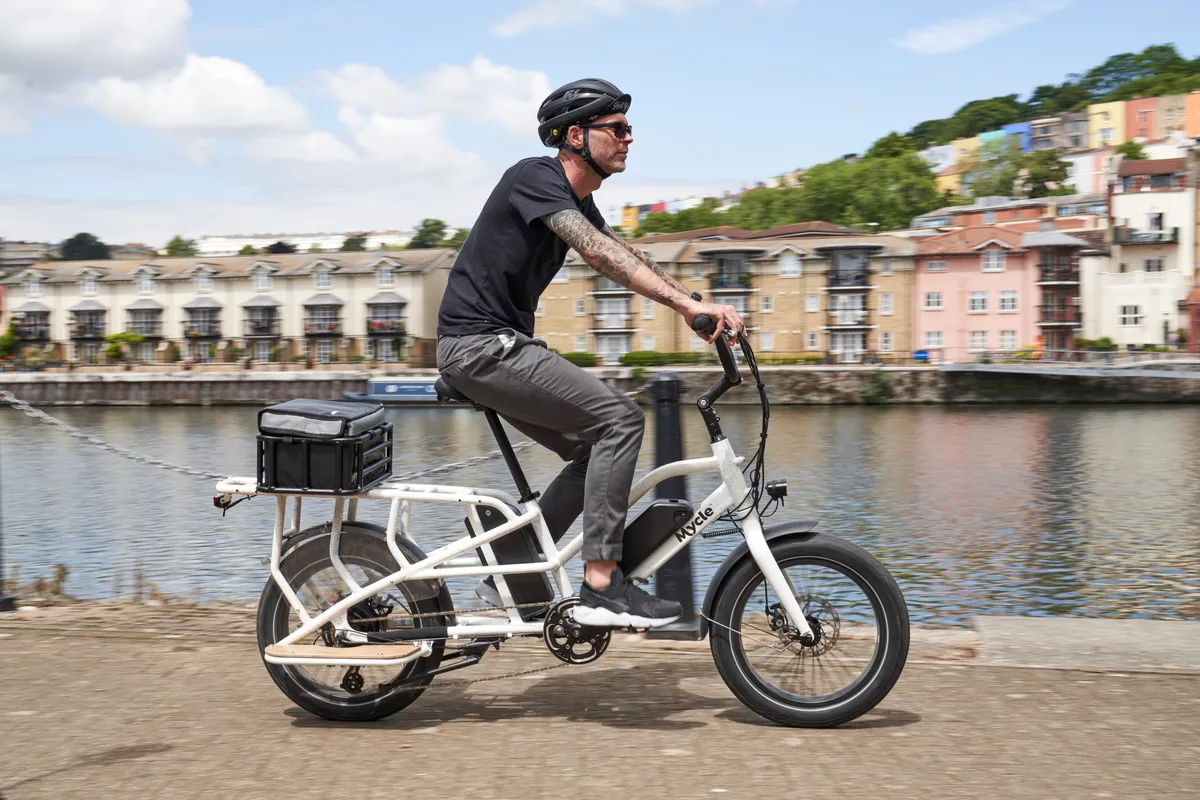
If you regularly get stuck in traffic jams or have had to wait for delayed public transport on your commute, you’ll probably find cycling to work is quicker. It’s still sensible to give yourself plenty of time to cruise in at a relaxed pace, though.
If you leave too little time, there’ll be the temptation to sprint into work. While it might be good for your fitness, you’ll arrive at the office a sweaty mess with your heart rate through the roof. It’s also arguably more dangerous.
Moreover, if your tyres aren't tubeless and you have to fix a puncture when cycling to work, you'll welcome some leeway.
No matter how good a bike rider you are, you want to give yourself plenty of time and space to react to other road users. The most important thing is to arrive at the office in one piece.
It probably goes without saying, but don’t be tempted to jump red lights or break the Highway Code, even if you’re in a rush.
Communicate with drivers
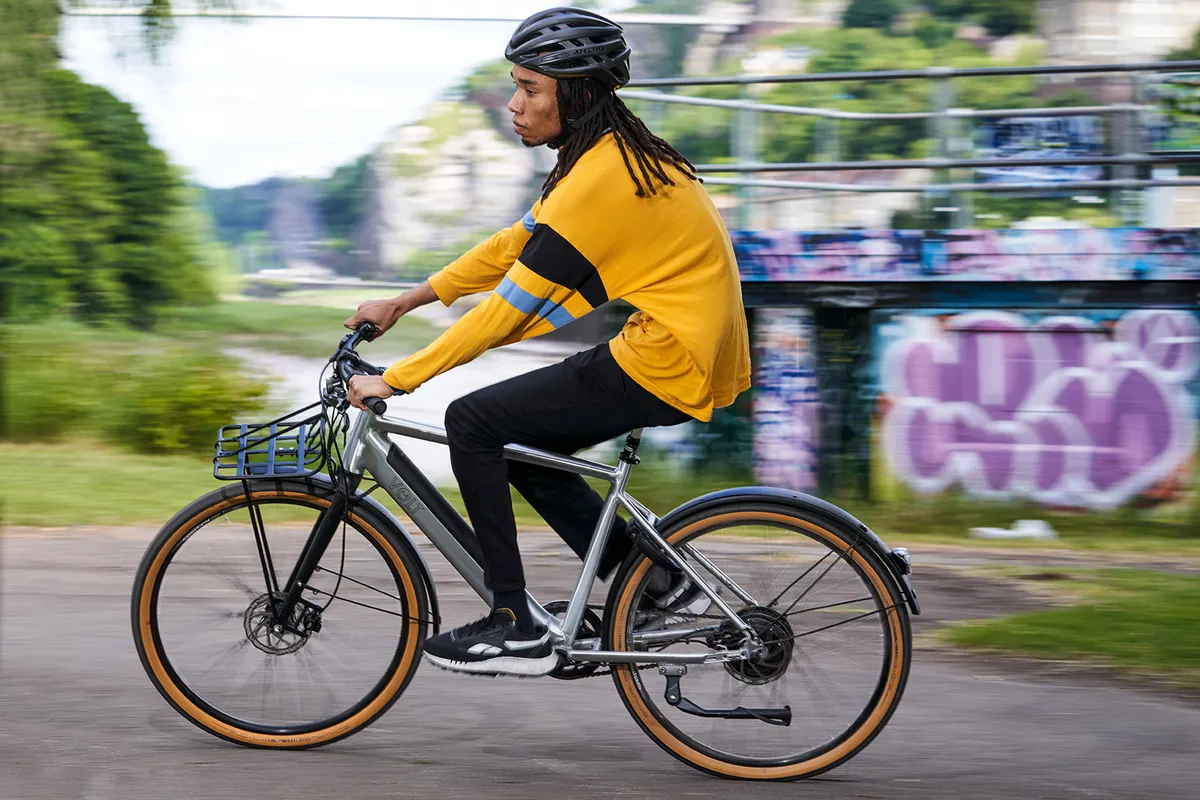
While we’d generally advise using segregated cycle lanes for commuting by bike wherever possible (they make for a refreshingly stress-free experience when done properly), most cyclists will have to take to the road at some point.
Communicating with drivers using clear hand signals and lots of eye contact is vital. If you can’t make eye contact with a driver, it’s safer to assume they haven’t seen you and proceed accordingly.
Likewise, don’t forget to say thanks and give a wave to other road users who give way to you or give you plenty of room. It goes a long way to reinforcing good behaviour.
If you do have any trouble with another road user, the best thing you can do (assuming you’re okay) is to stay calm, take a deep breath and let it go.
If you don’t, you’ll almost certainly get into a pointless argument with someone who has no intention of listening to you. Trust us, it’s just not worth it.
Be sensible around traffic
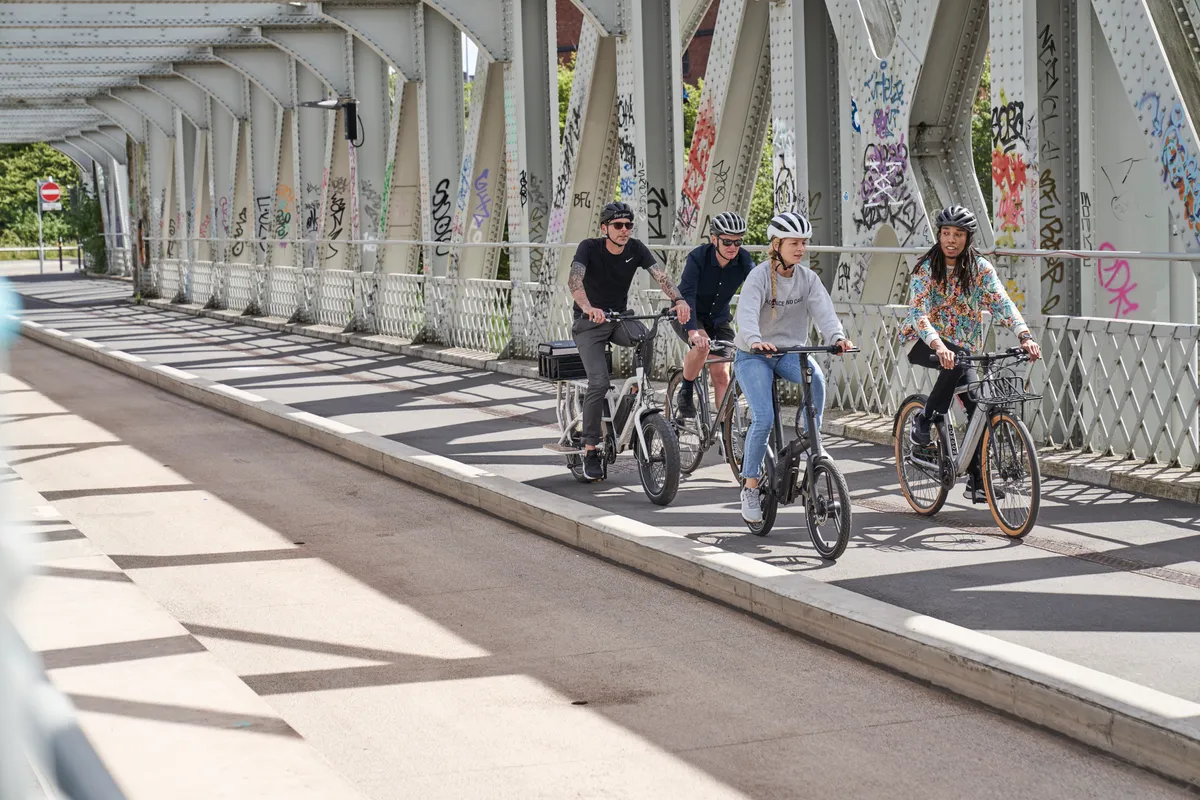
Though you have as much right to space as any other road user, be careful. Knowing how to ride safely in traffic is essential.
Assume car doors will open and keep a good distance between yourself and parked cars.
Likewise, don’t ride in the gutter right next to the curb. It’s usually littered with potholes, debris and other horrible stuff that could cause a puncture or a crash. It can also encourage drivers to attempt unsafe overtaking manoeuvres.
Filtering through traffic is fine as long as it’s safe to do so, but be wary of putting yourself in drivers' blindspots. Where possible, you should overtake on the driver’s side, but if you have to filter on the inside of a vehicle watch out for side roads and turns.
If you’re in a driver’s blindspot they may not see you and could turn across you without warning. The safest thing to do is to not put yourself in that situation to begin with.
It’s also vital you take particular care around lorries, trucks, buses and vans. These vehicles often have significant blind spots, so you should never filter up the inside of them or get too close. Even if traffic is stationary, be patient and don’t take any risks.
Don’t forget your lights

Cycling at night – or, rather, in the dark – is inevitable if you commute year-round. However, riding in the dark needn't be a reason to put you off biking to work.
The laws surrounding bicycle lights in the UK can be a little confusing at first, but the main thing you need to know is it’s illegal (and dangerous) to cycle on a public road after dark without lights (and reflectors).
Running lights in the daytime can also help you be seen and stay safe. The best road bike lights can make a big difference to how visible you are on dark, dreary days during the winter months, too.

If your lights take standard batteries, it’s advisable to carry spares. If you have rechargeable ones, don’t forget to pack the charging equipment in your commuting bag so you can top them up at work, if necessary.
Bike dynamo lights are brilliant for commuting because you don't have to charge them. So long as the dynamo system is working, the lights will be powered by the wheels turning.
We’d also advise stashing a couple of small spare lights in your bag for emergency use, if possible. This set doesn’t have to break the bank, but you'll be pleased you have them the day you or a colleague forgets lights and ends up staying late at the office/pub.
What to wear when cycling to work
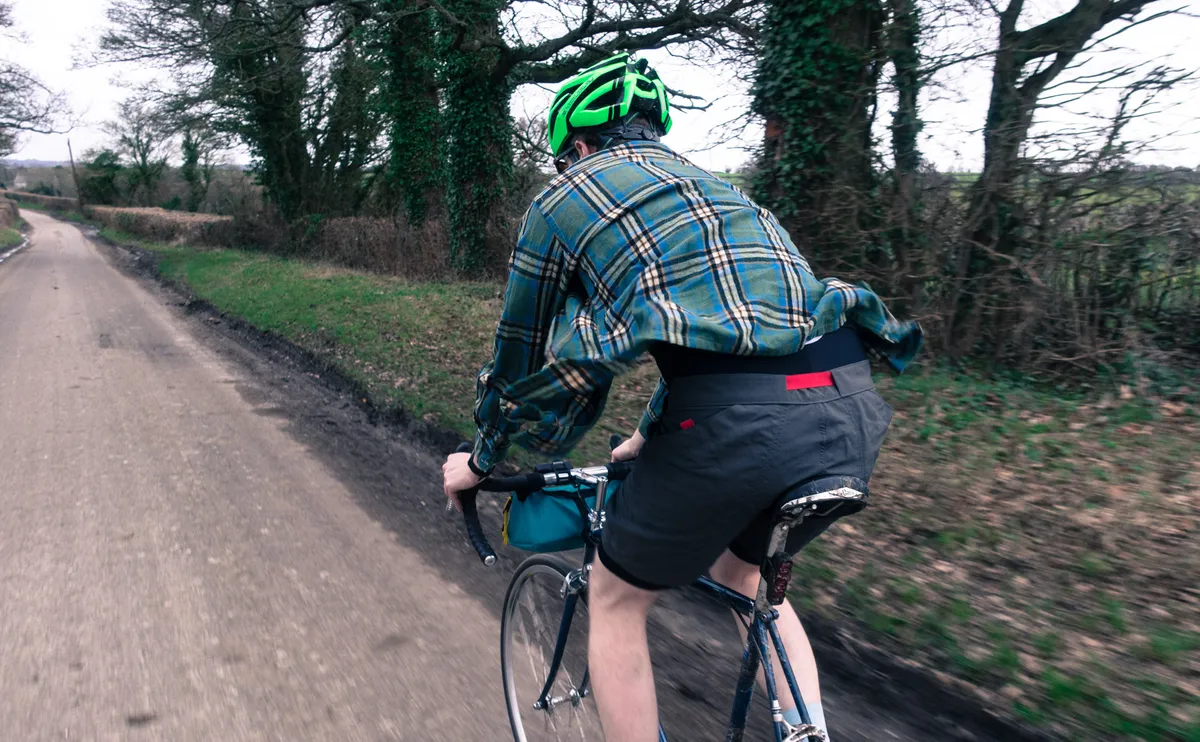
You don’t need cycling-specific clothing to commute to work, but the weather won't always be kind to you and when it rains you'll get inconveniently wet.
The best cycling kit for riding in the rain includes waterproof jackets and waterproof trousers to stop your work clothes getting soaked. You might also wish to consider a waterproof backpack to protect your laptop and valuables.
Mudguards (or fenders, if you don’t live in the UK) are one upgrade that we wish came stock on every bike sold for commuter purposes. A good set will mean you can wave goodbye to wet feet and a wet back forever more.
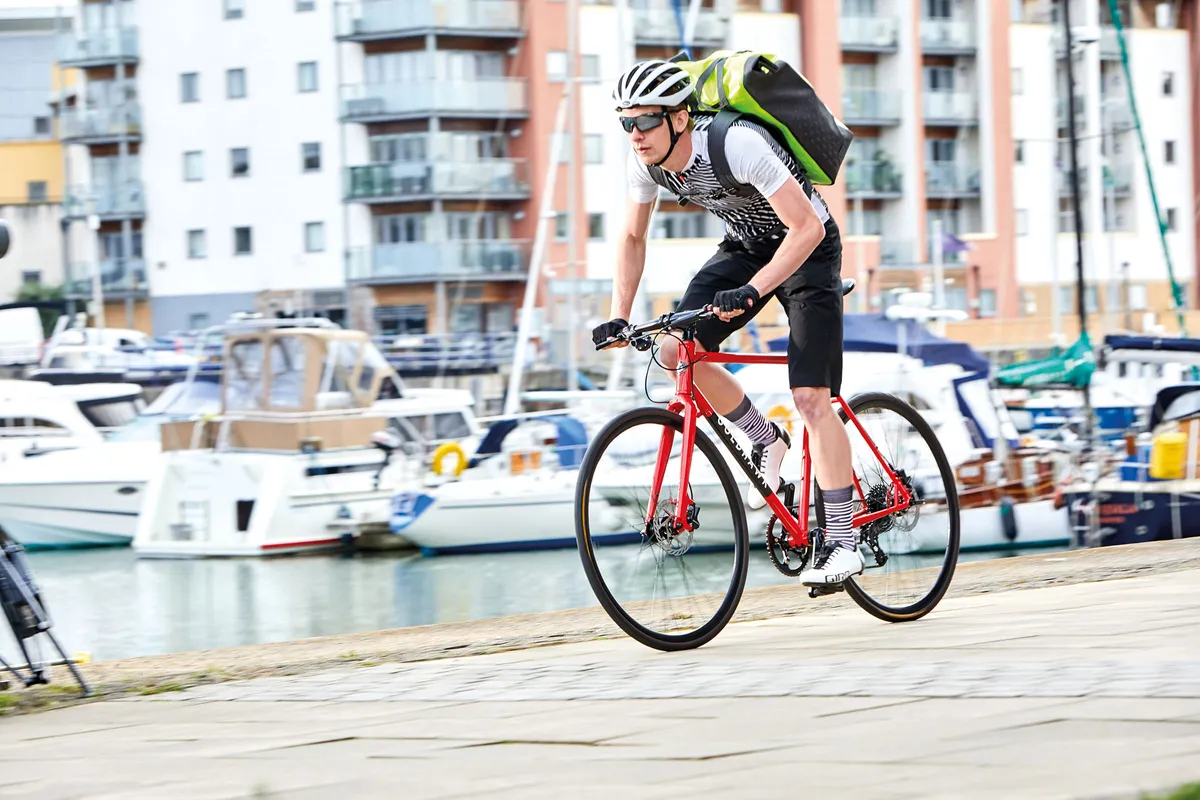
A handlebar-mounted bike bell will enable you to communicate your presence with pedestrians and other road users as well.
You’ll also need to carry a multi-tool, at least one spare inner tube (two is better), a couple of tyre levers and a mini pump, in case of any mechanical mishaps.
A basic knowledge of how to use these tools is essential too, should you need to fix a puncture or adjust your gears in the middle of a ride.
We would advise practising these things at home in advance. Don’t be afraid to flag down a fellow cyclist if you get stuck, though – they’ll almost certainly be happy to help.
Cycling to work without getting sweaty
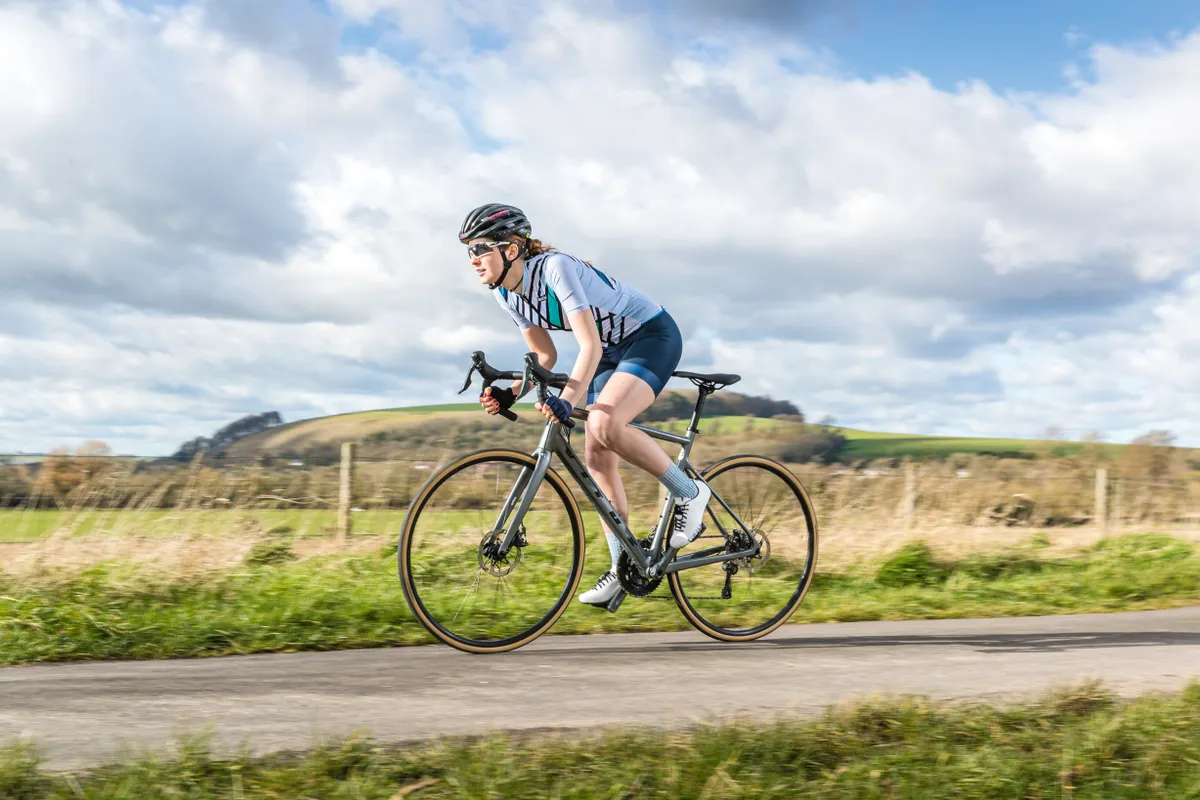
Cycling inevitably causes you to warm up because your heart rate rises, pumping hot blood around your body.
To avoid overheating and starting to sweat when commuting by bike, ride at a lower intensity than you would on a training ride.
If your route in is long or hilly, this is, of course, harder. Hopefully, your employer offers changing and showering facilities – if they don't, petition them for it!
While no-one wants to be cold on the bike, you’re also best starting your trip to work on the chilly side because you’ll warm up after a few minutes.
Dress appropriately and this way you won’t be roasting by the time you arrive in the office.
The way you transport your kit and work items also influences how hot you’ll get.
If you can shower once at work, turn your commute into a training session doing ride to work workouts.
As a result, you’ll get fitter on your commute and your commute can help you lose weight by cycling.
Nevertheless, you’ll need to refuel before starting work, so read our advice on how to choose the best biking breakfast for ideas.
Getting your gear to work
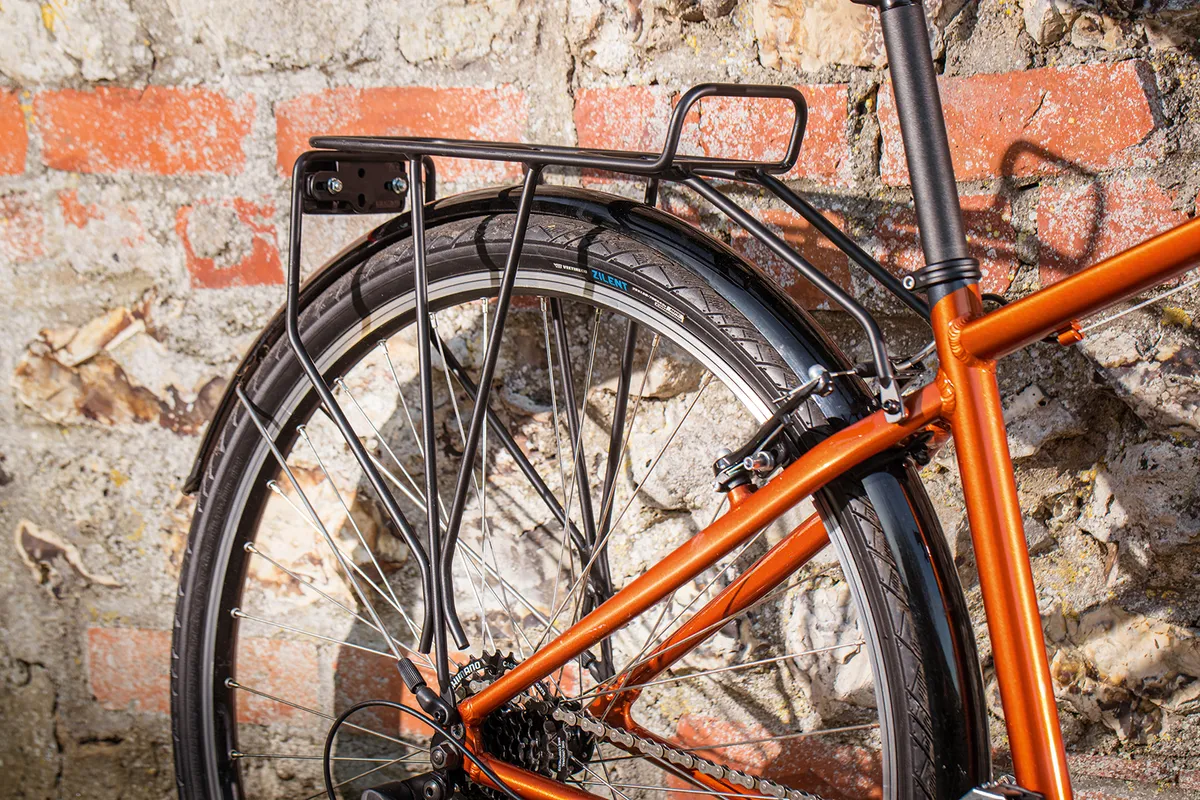
For shorter, more sedate rides of up to 30 minutes, a backpack is often okay, provided you’re not carrying a heavy load and it's not too warm. On rides longer than that, your back and neck may start to ache.
Plus, if you’re wearing normal clothes, your back will sweat. The best cycling backpacks partially mitigate this.
But for longer rides, going faster and to carry work items, a rack and panniers are the best form of cycling luggage.
Try as you may, you’ll struggle to securely carry a laptop in bikepacking bags. They’re fine for transporting a change of clothes and shoes, though.
An alternative is to take public transport occasionally to carry what you need for the week in a backpack. Think shower gel, towel and change[s] of clothes.
At the end of the day, leave your work stuff at your desk or in a locker, and cycle home unencumbered. You could do the same the following morning or take the train some of the way to spare your legs.
